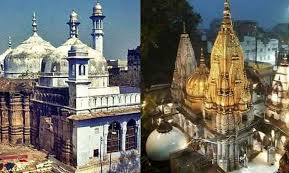
Mandir or Masjid? Let’s forget the past
The Supreme Court’s directive on Friday to freeze the proceedings in matters of Shahi Jama Masjid in Sambhal and present the investigation report to it in a sealed cover may prove to be a temporary measure to cool the tempers running high following violence in the Uttar Pradesh town. The spark of the communal conflict was lit when a local court issued a directive to investigate if the historic mosque was a temple. The ongoing survey in the mosque and a lower court’s issuance of an order seeking to declare the sufi shrine in Ajmer a temple are sufficient indication that the Religious Places (Special Provision) Act 1991 is of no avail in ensuring protection of the places of worship as they existed on August 15, 1947.
In both cases lower courts issued direction for survey on the plea from right wing activists that the Mosque in Sambhal and Dargah in Ajmer were raised over temples that existed there ostensibly demolishing the former structure. Babri Masjid’s was an exceptional case. Its demolition by a mob on December 6, 1992 had followed a similar case but was kept out of the realm of this Act as the issue had become too contentious over decades and those defending the Masjid had pledged themselves to abide by whatever the Supreme Court ruled for the sake of peace and harmony. The apex court though handed over the site for the construction of Ram Mandir but resolutely rejected the theory that the archaeological and historical evidences attest to existence of any temple at the site and held the demolition an act of violence.
The Ajmer Dargah of Khawaja Moinuddin Chishti (1142-1236) is revered all over the subcontinent and draws huge crowd of devotees belonging to all communities all across the year. It has been a centre of devotion from a common Muslim right up to prime ministers and heads of states. Even Prime Minister Narendra Modi sends a chadar to be offered on the eve of the annual Urs. Raised amid desolate deserts, it is inconceivable that it ever had a temple at the site, let alone destruction of any place of worship. Yet the lower court’s directive has the potential of encouraging more such controversial pleas thereby raising communal passions and abetting elements to make political capital out of it. The nature of the court directives are likely to open a Pandora’s box as majority of such pleas and claims are motivated by the polarizing politics rather than any religious sentiments. A pattern to keep the issue alive is quite evident. The country has no death of places of worship belonging to all communities.
Layers upon layers of civilisations constitute history and today what may look like an abnormal and condemnable act was perfectly normal to expect in the past. It is quite possible that a mosque is raised over a temple which was built over a Buddhist vihara and so on. The question that needs to be asked as to how deep one is willing to go to uncover genuinely indigenous culture. The 1991 Act was based on the axiom ‘Let bygones be bygones’ and should be followed in letter and spirit. It was breached in the case of Babri Masjid with extremely unfortunate consequences for the polity. Efforts to milk the communal cow further will push the nation into perpetual predicament. It is time to call ‘thus far, no further’ and ensure the inviolability of the 1991 Act.
 English daily published in Bengaluru & Doha
English daily published in Bengaluru & Doha






